Artificial Intelligence (AI) and chatbots have become increasingly popular in recent years, revolutionizing the way businesses engage with their customers. AI refers to the simulation of human intelligence in machines that are programmed to think and learn like humans. Chatbots, on the other hand, are computer programs designed to simulate conversation with human users. These technologies have proven to be invaluable tools for website customer engagement, allowing businesses to provide personalized and efficient customer service.
Key Takeaways
- AI and chatbots can benefit your website by improving customer engagement, streamlining customer service, and enhancing user experience.
- Choosing the right AI and chatbot solutions for your business involves considering factors such as your budget, customer needs, and technical capabilities.
- Integrating AI and chatbots into your website requires a step-by-step process, including defining your goals, selecting a platform, and testing and refining your chatbot.
- Customizing your chatbot can enhance customer experience by tailoring responses to customer needs and preferences.
- Maximizing the potential of AI for personalized customer interactions involves using data to create targeted messaging and recommendations.
Understanding the Benefits of AI and Chatbots for Your Website
The benefits of AI and chatbots for website customer engagement are numerous. Firstly, they provide 24/7 customer support, ensuring that customers can get assistance at any time of the day or night. This is particularly important for businesses with a global customer base or those that operate in different time zones. AI and chatbots can handle a wide range of customer inquiries, from basic questions to more complex issues, freeing up human agents to focus on more critical tasks.
Furthermore, AI and chatbots can improve response times and reduce wait times for customers. They can instantly provide answers to frequently asked questions and guide customers through common processes, such as placing an order or tracking a shipment. This not only enhances the customer experience but also increases customer satisfaction and loyalty.
Several businesses have successfully integrated AI and chatbots into their websites. For example, Sephora, a beauty retailer, uses a chatbot called “Sephora Virtual Artist” to help customers find the perfect makeup products. The chatbot uses AI technology to analyze a customer’s facial features and recommend products based on their preferences. This has not only improved the customer experience but also increased sales for Sephora.
Choosing the Right AI and Chatbot Solutions for Your Business
When choosing AI and chatbot solutions for your business, there are several factors to consider. Firstly, you need to determine your specific needs and goals. What do you want the AI and chatbot to achieve? Do you need it to handle customer inquiries, provide product recommendations, or assist with transactions? Understanding your requirements will help you choose the right solution.
Secondly, consider the level of customization and integration options offered by the AI and chatbot solution. You want a solution that can be tailored to your brand’s voice and tone, as well as seamlessly integrated into your website. Look for solutions that offer easy integration with popular platforms and have a user-friendly interface.
Some popular AI and chatbot solutions for businesses include IBM Watson, Google Dialogflow, and Microsoft Azure Bot Service. These platforms offer a range of features and capabilities, allowing businesses to create highly intelligent and interactive chatbots.
Integrating AI and Chatbots into Your Website: A Step-by-Step Guide
Integrating AI and chatbots into your website can be a straightforward process if you follow the right steps. Here is a step-by-step guide to help you get started:
1. Define your goals: Determine what you want to achieve with your AI and chatbot integration. This will help you choose the right solution and set clear objectives.
2. Choose an AI and chatbot platform: Research different platforms and choose one that aligns with your goals and requirements. Consider factors such as customization options, integration capabilities, and pricing.
3. Design your chatbot: Use the platform’s tools and features to design your chatbot’s conversation flow. Consider the different scenarios and questions that customers may have and create appropriate responses.
4. Integrate the chatbot into your website: Follow the platform’s instructions to integrate the chatbot into your website. This may involve adding a code snippet or using a plugin or widget.
5. Test your chatbot: Before launching your chatbot, thoroughly test it to ensure that it functions correctly and provides accurate responses. Test it with different scenarios and user inputs to identify any potential issues.
6. Launch and monitor: Once you are satisfied with the performance of your chatbot, launch it on your website. Monitor its performance and gather feedback from customers to make any necessary improvements.
Customizing Your Chatbot to Enhance Customer Experience
Customizing your chatbot is crucial for enhancing the customer experience. A generic and impersonal chatbot can be off-putting to customers and may not provide the level of assistance they need. Here are some tips for customizing your chatbot:
1. Use a conversational tone: Make your chatbot sound friendly and approachable by using a conversational tone. Avoid using overly formal or technical language that may confuse or alienate customers.
2. Personalize responses: Use customer data to personalize responses and recommendations. Address customers by their name and provide tailored suggestions based on their previous interactions or purchase history.
3. Provide human-like responses: Train your chatbot to understand and respond to natural language inputs. This will make the conversation feel more human-like and engaging for customers.
4. Offer multiple language options: If you have a global customer base, consider offering multiple language options for your chatbot. This will ensure that customers can communicate with the chatbot in their preferred language.
Maximizing the Potential of AI for Personalized Customer Interactions

AI can be used to create personalized customer interactions, enhancing the overall customer experience. By analyzing customer data and behavior, AI can provide tailored recommendations, offers, and content. For example, an e-commerce website can use AI to recommend products based on a customer’s browsing history or purchase patterns.
AI can also be used to predict customer needs and proactively offer assistance. For instance, a travel website can use AI to analyze a customer’s search history and offer personalized travel recommendations or discounts.
Several businesses have successfully implemented personalized customer interactions using A
Netflix, for example, uses AI algorithms to analyze user data and provide personalized movie and TV show recommendations. This has significantly improved the user experience and increased customer engagement on the platform.
Streamlining Your Customer Service with AI and Chatbots
AI and chatbots can streamline customer service by automating repetitive tasks and providing instant assistance. They can handle a wide range of customer inquiries, from basic questions to more complex issues, reducing the workload for human agents.
For example, a chatbot can provide instant answers to frequently asked questions, such as shipping information or return policies. This eliminates the need for customers to wait for a human agent to respond and reduces the overall response time.
Furthermore, AI can be used to analyze customer inquiries and route them to the most appropriate human agent. This ensures that customers are connected with the right person who can provide the necessary assistance, improving efficiency and customer satisfaction.
Enhancing Your Website’s User Experience with AI and Chatbots
AI and chatbots can enhance website user experience in several ways. Firstly, they provide instant assistance and support, ensuring that customers can get help whenever they need it. This eliminates the frustration of waiting for a response or searching for information on their own.
Secondly, AI and chatbots can personalize the user experience by providing tailored recommendations and content. By analyzing user data and behavior, AI can understand individual preferences and offer relevant suggestions. This creates a more engaging and personalized experience for users.
Furthermore, AI and chatbots can improve website navigation by guiding users through complex processes or helping them find specific information. This reduces the time and effort required for users to find what they are looking for, enhancing their overall experience on the website.
Leveraging AI and Chatbots to Improve Customer Engagement Metrics
AI and chatbots can significantly improve customer engagement metrics for businesses. By providing instant assistance and personalized recommendations, they can increase customer satisfaction and loyalty. Satisfied customers are more likely to engage with a brand, make repeat purchases, and recommend the brand to others.
Furthermore, AI and chatbots can increase customer engagement by providing interactive and engaging experiences. For example, a chatbot can engage customers in a conversation, ask for feedback, or offer exclusive promotions. These interactions not only keep customers engaged but also provide valuable insights for businesses.
Several businesses have successfully improved customer engagement metrics using AI and chatbots. For example, Starbucks uses a chatbot called “My Starbucks Barista” to allow customers to place orders through voice commands or text messages. This has not only increased customer engagement but also improved order accuracy and efficiency.
Measuring the Success of Your AI and Chatbot Integration
Measuring the success of your AI and chatbot integration is essential to understand its impact on your business. Here are some metrics you can track:
1. Customer satisfaction: Measure customer satisfaction through surveys or feedback forms. Ask customers about their experience with the chatbot and whether it met their expectations.
2. Response time: Track the average response time of your chatbot to ensure that it is providing timely assistance to customers. Compare this with the response time of human agents to identify any areas for improvement.
3. Conversion rate: Measure the conversion rate of customers who interacted with the chatbot compared to those who did not. This will help you understand the impact of the chatbot on sales or other desired actions.
4. Customer engagement: Track metrics such as click-through rates, time spent on site, or number of interactions with the chatbot to measure customer engagement.
5. Cost savings: Measure the cost savings achieved by automating customer service tasks with AI and chatbots. Compare this with the cost of employing human agents to determine the return on investment.
Future Trends in AI and Chatbots for Website Customer Engagement
The future of AI and chatbots for website customer engagement looks promising, with several trends expected to emerge. Firstly, there will be a greater focus on natural language processing and understanding. Chatbots will become even more conversational and capable of understanding complex queries.
Secondly, AI and chatbots will become more integrated with other technologies, such as voice assistants and augmented reality. This will enable businesses to provide seamless and immersive customer experiences across different platforms and devices.
Furthermore, AI and chatbots will become more intelligent and capable of handling more complex tasks. They will be able to analyze customer data in real-time, make predictions, and provide personalized recommendations in a more sophisticated manner.
In conclusion, AI and chatbots have become essential tools for website customer engagement. They provide 24/7 support, improve response times, and enhance the overall customer experience. By choosing the right AI and chatbot solutions, customizing them to align with your brand’s voice, and leveraging their capabilities for personalized interactions, businesses can significantly improve customer engagement metrics. As the future of AI and chatbots continues to evolve, businesses should embrace these technologies to stay ahead of the competition and provide exceptional customer service.
Integrating AI and Chatbots into Your Website for Better Customer Engagement is a crucial step in enhancing your online presence. However, it’s important to understand the differences in approach between luxury and conventional websites. In a related article by Krotov Studio, they delve into the unique considerations and strategies required for luxury websites compared to their conventional counterparts. By exploring this article on differences in approach: luxury vs conventional websites, you can gain valuable insights that will help you tailor your AI and chatbot integration to meet the specific needs of your target audience.
FAQs
What is AI?
AI stands for Artificial Intelligence. It is a branch of computer science that deals with the creation of intelligent machines that can perform tasks that typically require human intelligence, such as visual perception, speech recognition, decision-making, and language translation.
What are chatbots?
Chatbots are computer programs designed to simulate conversation with human users, especially over the internet. They are often used in customer service to provide quick and efficient responses to common queries.
How can AI and chatbots improve customer engagement?
Integrating AI and chatbots into your website can improve customer engagement by providing quick and efficient responses to customer queries, reducing response times, and improving the overall customer experience. They can also help businesses gather valuable customer data and insights that can be used to improve products and services.
What are the benefits of using AI and chatbots?
The benefits of using AI and chatbots include improved customer engagement, reduced response times, increased efficiency, cost savings, and the ability to gather valuable customer data and insights.
What are the potential drawbacks of using AI and chatbots?
Potential drawbacks of using AI and chatbots include the risk of technical errors, the potential for miscommunication with customers, and the risk of losing the personal touch that comes with human interaction. It is important to carefully consider the potential drawbacks before implementing AI and chatbots into your website.
